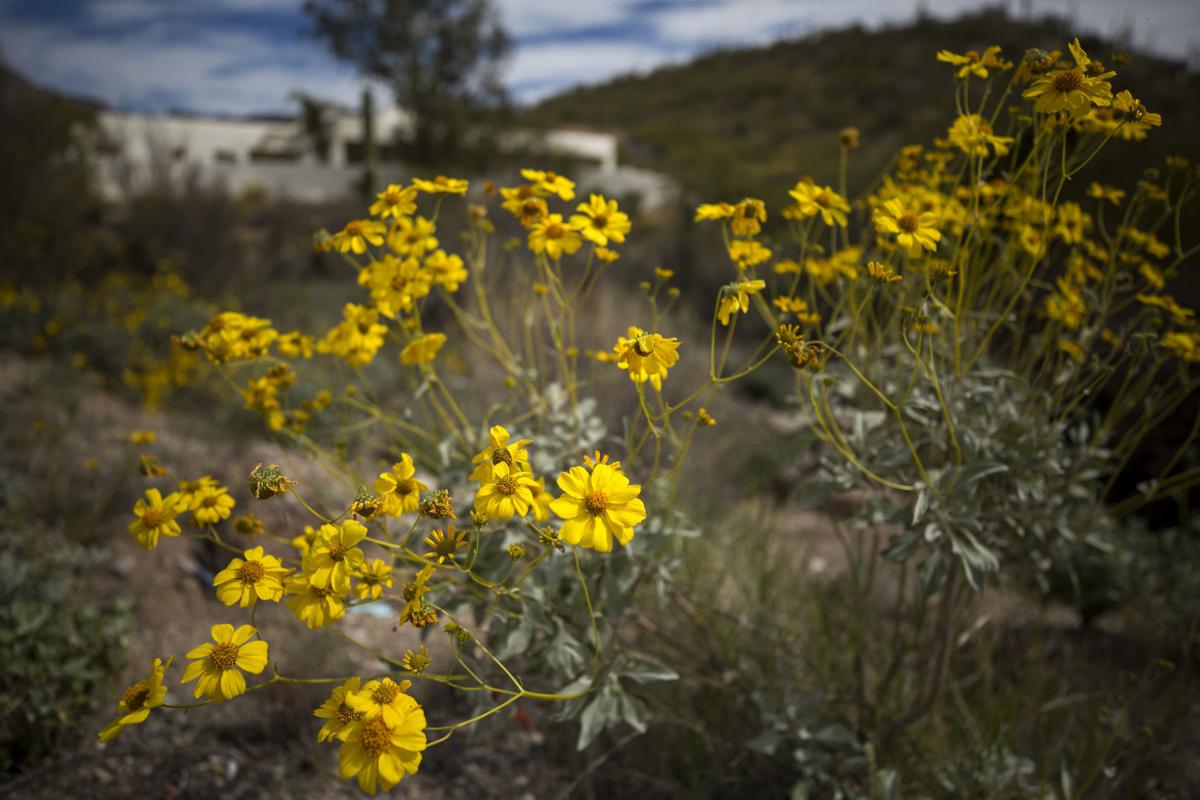The arrival of spring in the desert, brings with it the hope that our dusty green lansdcape will be awash in yellow, blues and oranges when wildflowers start to bloom.
After being spoiled by stunning wildflower displays the last two springs, it's sad to say that so far this year's wildflower display is more of a miss, than a hit.
Blame it on the rain, or lack thereof.
Flowering desert plants come in two varieties — the more particular annuals which require the right amount of rain at the right time to bloom and the steadfast perennials which flower pretty consistently each year no matter the rainfall, explained Jeff Babson a naturalist with Pima County Natural Resources, Parks and Recreation.
Even though we've seen several rainy (and snowy) days over the last few months, annuals also need rain in the fall for a showy spring bloom.
Since 2020 was one of the hottest and driest years on record in Tucson the conditions just weren't right for colorful annuals like Mexican gold poppies, owl clover and lupines to bloom abundantly and blanket the desert in an explosion of color. See what they look like here.
"The annuals, which are the ones I think most people think of when they think of the spring wildflower display in Southern Arizona, those are the plants they're thinking about and those are the ones dependent upon rainfall," Babson says
They need about an inch of rain between late September and December to germinate the seeds and then another inch of rainfall every month between December and March to help the germinated seedlings grow, Babson says.
One of the annuals you're likely to see flowering nicely right now is the desert marigold, which Babson says is a bit more "flexible" than other annuals and can be seen just driving along roadsides.
Although there isn't an impressive bloom this year, because of one of the "survival mechanisms" of annuals there's a chance we could be treated to quite the show next spring.
"The good thing from a plant's perspective is that many of these seeds can remain viable for years," Babson says. "So even though this year is not going to be a great year, it's not going to be a complete bust either, but it's not going to be great, the seeds from two years ago might still be there on the ground, and they're just biding their time, until they get enough rainfall at the right time of year so that maybe next year, if we have rains at the right time of year and the right quantity it might be absolutely fantastic next year."
While there isn't much annual action this year, you can still count on the perennials like cacti and ocotillo to flower as usual later in the spring.
Brittlebush, a bright yellow shrub, is already starting to flower and will become more abundant in the coming weeks, Babson says.
Later in the spring we'll start seeing palo verde trees and hedgehog cactus start to flower and in May the arms of towering saguaros will be covered in white blossoms.
"Don't get disappointed by this year," Babson says. "Just know that this year is probably not going to be a great year (for annuals), but next year is another blank canvas."
Where to see blooming flowers
There may not be a huge display this year, but you that doesn't mean you can't find any blooms at all.
Babson says three go-to spots for wildflowers are Sabino Canyon, particularly along the creek, Catalina State Park and Picacho Peak State Park. Keep in mind, you're not likely to find a ton of flowers, but at the very least it's the perfect weather to spend some time outside.
Also, keep an eye on Arizona Wildflower Watch's Instagram to see shots from all across the state and find some inspiration for places to check out. You an also scroll through to see photos of the stunning displays from previous years.
While all the flowers may not be wildflowers, the flower beds at the Tucson Botanical Gardens are looking pretty dazzling right now. Plus, tall bearded irises are popping open and a massive Texas Canyon Laurel is covered in fragrant purple flowers, whose grape soda scent permeates even a triple-layer face mask.
You're likely to find a few things blooming on a walk through your own neighborhood. Our spring flower and bird guide can help you identify what you come across.





